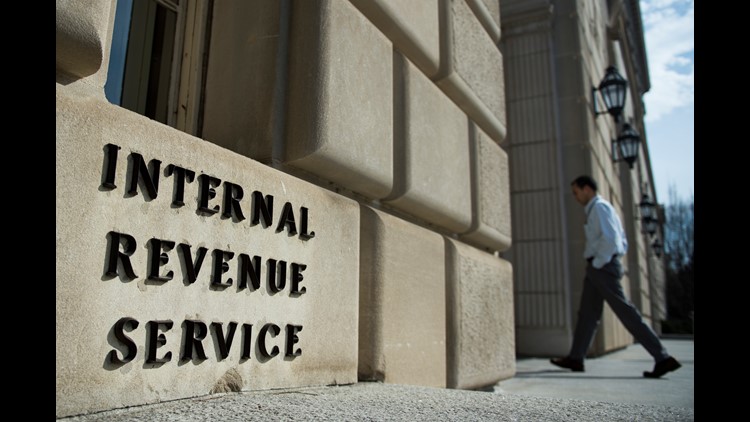An estimated 1 million taxpayers are leaving $1 billion worth of tax refunds on the table - and they only have a few weeks left to claim them.
The unpaid refunds have been collecting dust in the U.S. Treasury since 2014. These taxpayers didn't file their 2014 taxes, the IRS says, and in order to get the refunds, they have to file by April 17 or miss out on the cash.
This isn't a few bucks we're talking about either. The median unclaimed refund is worth $847.
You only have three years to claim unpaid tax refunds, which is why these taxpayers only have until April to collect. Although it's true that you'll get slapped with a penalty for filing taxes late, that isn't the case for people expecting a refund. There is no tax penalty for filing late when you are due a refund, acting IRS Commissioner David Kautter said recently.
The state with the highest rate of unclaimed tax refunds is Texas. The IRS estimates some 108,100 taxpayers in the state have an unclaimed tax refund with a median value of $899. Wyoming and North Dakota are among the states with the fewest number of taxpayers who are missing out on a 2014 refund; however, these taxpayers have the most money to lose - a median refund of $973 and $952, respectively.
Why would anyone leave their refunds unclaimed?
A common misconception is that filing taxes is expensive, even for low earners. In reality, there are several programs that allow you to file taxes for free if your income is under $66,000.
Plenty of taxpayers, especially students or low-wage earners, may not consider filing their taxes because they don't think they earn enough income to make it worth their while.
Even so, these workers often do pay federal and state taxes throughout the year and may be overpaying. Furthermore, tax refunds aren't just a way to repay people who had too much taxes deducted from their paychecks - they also include refundable tax credits like the Earned Income Tax Credit (EITC), Child Tax Credit, and the American Opportunity Tax Credit for undergraduate students. This means that filing a return is particularly important for low-income taxpayers, even if they didn't have any taxes withheld during the year.
Filing prior year returns is also very important for self-employed individuals (including "gig economy" workers for companies like Uber, Lyft, Postmates and Instacart) - filing a tax return and paying Medicaid and Social Security taxes on that income is how the Social Security Administration determines eligibility and payment amounts for retirement benefits.
This doesn't mean that you should make a habit of not filing your taxes. As we said, if you owe money to the IRS, they'll charge interest and late filing penalties if you file past the deadline. But it does mean that if you forgot to file your taxes in a previous year, all hope may not be lost.
How to file a prior year tax return
If you or someone you know needs to file a tax return for 2014, 2015 or 2016, here are the steps to do so:
- Make sure you have all of your documents. If you're missing any tax forms (like W-2s or 1099s), the company or person that paid you should be able to provide a copy. Request a "Wage and Income Transcript" on IRS.gov, which will tell you all of the income that was reported to the IRS for the year(s) you request.
- Prepare your federal tax return. If you want to fill out your forms by hand, the IRS website has all prior years' tax forms available for download. Most tax software companies also make prior years' software available for download, though you'll usually pay full price for it. There are some free online options, like FreeTaxUSA.com (free for federal taxes, but there are fees for state filing and additional services). Check out our 2018 roundup of the best tax software.
- Print, sign, and mail your return. In most cases, prior years' tax returns cannot be filed online. Make sure to keep a copy for your records, and send your return with certified mail or some other form of delivery confirmation.
- Wait. Prior year tax returns are not high on the IRS' priority list, and refunds cannot be direct deposited. The standard processing time for current year returns filed by mail is six to eight weeks, so expect to wait at least that long for a response - and possibly even longer. If everything looks good, you'll just get a check in the mail; if the IRS has any questions, or thinks you owe them taxes for another year, then you'll get a letter in the mail asking for more information.
- Don't forget about your state taxes. Chances are that if you didn't file your federal taxes, you also didn't file a state tax return - you might have even more money waiting!
The same deadlines for prior year filing also apply to making amendments to your taxes, so it's worth taking a moment to review your 2014 tax return and make sure you didn't miss anything. If you realize that you forgot to include a form, checked the wrong box, missed a deduction or made any other kind of error on your taxes, you have until April 17, 2018 to file a Form 1040X reporting the changes. If the new information results in an additional refund, you'll get a check in the mail - with interest!
If you need assistance with filing or amending a prior year tax return, the IRS coordinates two free programs to help people prepare their taxes: Volunteer Income Tax Assistance (VITA) and Tax Counseling for the Elderly (TCE). If you're not eligible for these programs, any paid tax preparer should be able to help you.
For more information about filing prior year tax returns, visit the IRS website.
MagnifyMoney is a price comparison and financial education website, founded by former bankers who use their knowledge of how the system works to help you save money.



